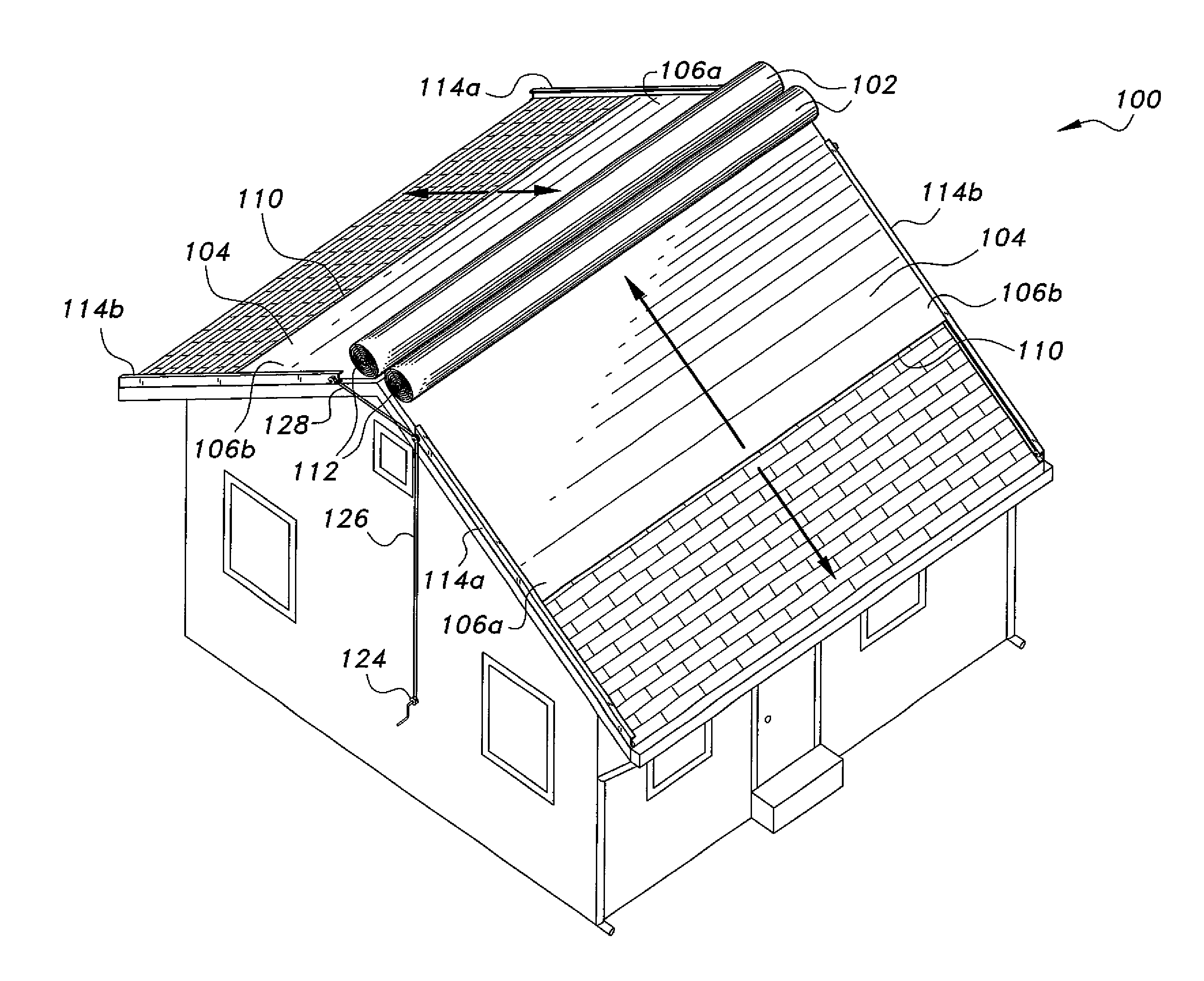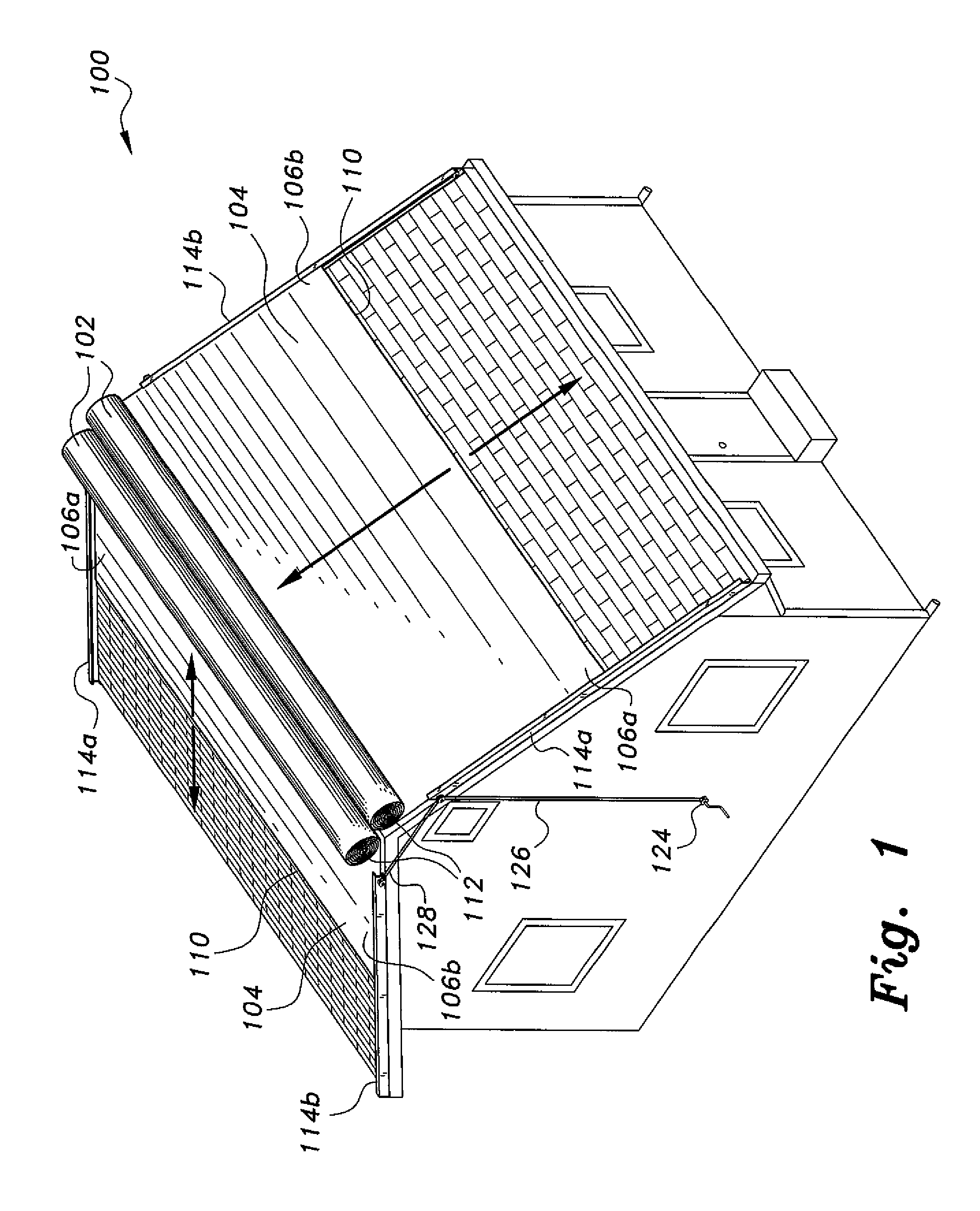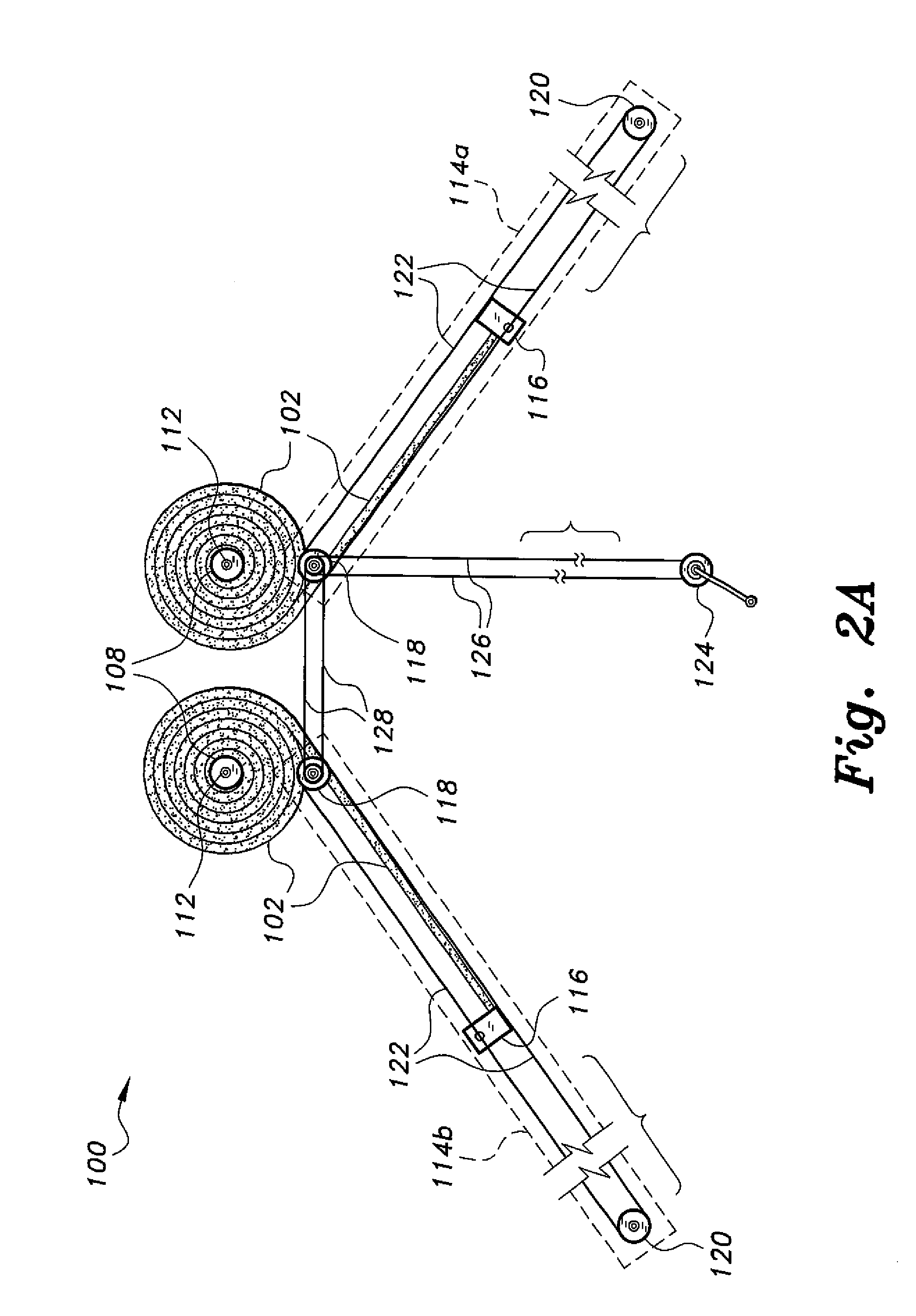Roof reflector
a technology of reflector and roof, which is applied in the direction of roof covering insulation, building components, plant protection, etc., can solve the problems of air conditioning units not operating at their optimal, no good thermal insulation characteristics of these materials, and poor thermal insulation of materials
- Summary
- Abstract
- Description
- Claims
- Application Information
AI Technical Summary
Problems solved by technology
Method used
Image
Examples
embodiment 200
[0033]The cable 320 and pulleys 316, 318 are actuated by a remotely located hand crank 324 that actuates a drive cable 326, these components being equivalent to the crank 124 and drive cable 126 of the blanket-type roof reflector 100 of FIGS. 1 and 2A. Alternatively, the electric motor 226 and electronic control switch or panel unit 224 of the embodiment 200 of FIG. 2B may be substituted for the crank 324 and drive cable 326 in the roof reflector 300 of FIG. 3, if desired.
[0034]The roof reflector 400 of FIG. 4 also includes a plurality of rigid panels, but the panels of the roof reflector 400 telescope into one another for retraction and storage, rather than folding. FIG. 4 shows three rigid telescoping panels, comprising a fixed upper panel 402, a single intermediate panel 404, and a lower panel 406. As in the roof reflector 300 of FIG. 3, as few as a single movable telescoping lower panel may be provided, or multiple intermediate panels may be provided. Each of the panels 402, 404...
fifth embodiment
[0037]FIG. 5 of the drawings provides an illustration of the roof reflector 500, comprising a plurality of laterally disposed, parallel, and adjustable rigid panels or slats. As few as two such panels or slats (comprising an upper panel and a lower panel) may be provided, but preferably a plurality of intermediate panels or slats, e.g., 502b through 502h, are provided between the uppermost panel or slat 502a and the lowermost panel or slat 502i. In the roof reflector 500 of FIG. 5, two substantially identical multiple panel or slat systems are provided, one to each side of the ridge or crest of the roof. It will be seen that this basic concept of applying like systems to both slopes or sides of a gabled roof will also apply to the roof reflectors 300 and 400 of FIGS. 3 and 4, where the second system is not shown for clarity in the drawing Figs.
[0038]Each of the panels or slats 502a through 502i has mutually opposed first and second ends 504a through 504i and 506a through 506i. An up...
embodiment 500
[0041]The pulley 508 and its cables 516a through 516c are actuated by a remotely located hand crank 524 that actuates a drive cable 526, these components being equivalent to the crank 124 and drive cable 126 of the blanket-type roof reflector 100 of FIGS. 1 and 2A and the corresponding crank 324 and cable 326 of the roof reflector 300 of FIG. 3 and the crank 424 and cable 426 of the roof reflector of FIG. 4. Alternatively, the electric motor 226 and electronic control switch or panel unit 224 of the roof reflector 200 of FIG. 2B may be substituted for the crank 524 and drive cable 526 in the multiple panel or slat roof reflector embodiment 500 of FIG. 5.
[0042]FIG. 6 provides an end elevation view in section of an alternative embodiment of the wheeled guides and eaves tracks used to draw the thermal blanket up and down over the surface of the roof. The two eaves E1 and E2 are shown in section, in mirror image to one another. Mutually opposed first and second upper angles, respectivel...
PUM
 Login to View More
Login to View More Abstract
Description
Claims
Application Information
 Login to View More
Login to View More - R&D
- Intellectual Property
- Life Sciences
- Materials
- Tech Scout
- Unparalleled Data Quality
- Higher Quality Content
- 60% Fewer Hallucinations
Browse by: Latest US Patents, China's latest patents, Technical Efficacy Thesaurus, Application Domain, Technology Topic, Popular Technical Reports.
© 2025 PatSnap. All rights reserved.Legal|Privacy policy|Modern Slavery Act Transparency Statement|Sitemap|About US| Contact US: help@patsnap.com



